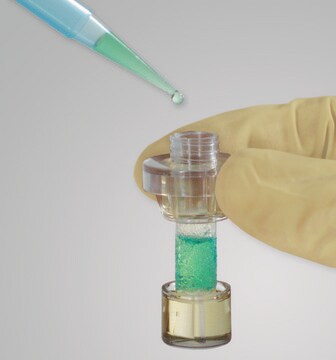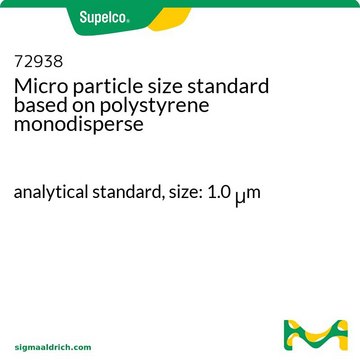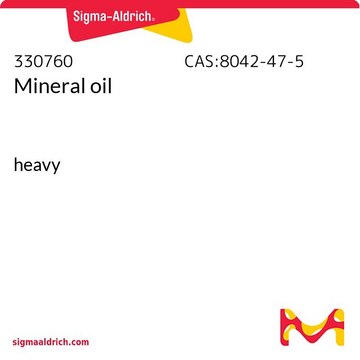1.00934
HPTLC plates, Silica gel 60 F₂₅₄ MS-grade
pkg of 25 plates, plate L × W 20 cm × 10 cm, glass support
About This Item
Recommended Products
material
glass support
silica gel 60 matrix
Quality Level
feature
binder Organic Polymer
fluorescent indicator
packaging
pkg of 25 plates
technique(s)
HPTLC-MS: suitable
thin layer chromatography (TLC): suitable
layer thickness
100 μm
plate L × W
20 cm × 10 cm
particle size
5-6 μm
pore size
60 Å medium pore diameter
storage temp.
2-30°C
General description
Gertrud Morlock, Wolfgang Schwack
Coupling of planar chromatography to mass spectrometry
TrAC Trends in Analytical Chemistry, Volume 29, Issue 10, 2010, Pages 1157-1171
Analysis Note
Pore volume(N₂-isotherm):0.74 - 0.84 ml/g
d 50 (laser diffraction, size distribution): 5.0 – 6.5 µm
Layer thickness: 80 - 120 µm
Chromatographic testing:
A) colourtest
hRf-values
- bleu viforganol, lipophile: 14- 26
- CeresBlack G, lipophile: 36 - 48
- ceres Violet brn, lipophile: 51 - 64
separation number (colour test, lipophile): ≥ 10.5
Typical value determined on aconditioned plate
Eluent A) Toluene (45% rel. humidity)
B) Biggest single peak area (BPC) ≤ area of 20ng Resorcin: Conforms
- Noise (TIC): Conforms
related product
Certificates of Analysis (COA)
Search for Certificates of Analysis (COA) by entering the products Lot/Batch Number. Lot and Batch Numbers can be found on a product’s label following the words ‘Lot’ or ‘Batch’.
Already Own This Product?
Find documentation for the products that you have recently purchased in the Document Library.
Articles
HPTLC separation followed by UV detection of the bitter acid content in various hop samples.
Protocols
Thin layer chromatography coupled with mass spectrometry does not require substantial sample preparation. Energy drinks can be applied without dilution directly onto the TLC plate.
Straightforward HPTLC-MS analysis of lactose in dairy products (milk or yoghurt) using only protein crash, centrifugation and dilution as sample preparation.
HPTLC–MS analysis of quinine in tonic water and caffeine in coffee and cola drinks. Tonic and cola drinks decarbonized through ultrasonication, and coffee extracted through PTFE filter.
Catalyst screening, KitAlysis™ High-Throughput Screening Kits, Thin layer chromatography (TLC), parallel analysis, parallel synthesisigh-Throughput Buchwald-Hartwig Amination Reaction Screening Kit, TLC-MS analysis
Our team of scientists has experience in all areas of research including Life Science, Material Science, Chemical Synthesis, Chromatography, Analytical and many others.
Contact Technical Service







